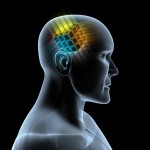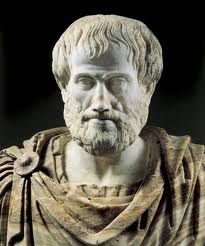Enclothed Cognition
I’ve written at various times about embodied cognition – the idea that the body influences the mind. (See here, here, and here.) In other words, our mind is not limited to our brain. We think with our bodies as well. You can improve your confidence by making yourself big. You can brighten your mood by putting a smile on your face. Want to feel morally pure? Take a bath.
How far does this extend? The clothes you wear, for instance, touch your body and mediate between your body and the world around you. It’s fair to ask: do the clothes you wear influence your thinking?
The answer is yes. Hajo Adam and Adam Galinsky introduced the term “enclothed cognition” in an article in the Journal of Experimental Social Psychology in July 2012. (Click here). They write that enclothed cognition describes, “…the systematic influence that clothes have on the wearer’s psychological processes.” They also suggest that two factors come into play: “the symbolic meaning of the clothes and the physical experience of wearing them.”
Many clothes have symbolic value. Take the humble white coat. In a hospital setting, we might assume that someone wearing a white coat is an expert or an authority. We behave differently towards her because of the coat’s symbolism. In other words, the coat affects the perceiver’s cognition and behavior. But does it affect the wearer’s cognition?
Adam and Galinsky conducted three experiments to find out. In the first, they divided randomly selected participants into two groups, one of which wore white lab coats, the other of which did not. The two groups then performed the Stroop test in which the word “blue” is printed in red or the word “green” is printed in yellow. The groups were asked to identify incongruities between the words and colors. The group wearing white lab coats performed about twice as well as the other group.
The second test used three groups. One group wore a white lab coat and believed that it was a doctor’s coat. The second group wore an identical white lab coat but believed that it was painter’s coat. The third group wore normal street clothes. The experimenters asked the three groups to spot discrepancies in a series of illustrations. Those who wore the doctor’s coat found more discrepancies than either of the other two groups. The symbolic value of a doctor’s coat had greater impact on attention than did the painter’s coat.
The third experiment was similar to the second except that some groups didn’t wear the doctor’s or painter’s coat; they merely observed them. Those who donned the doctor’s coat performed best.
The study suggests that the symbolic nature of clothing does indeed affect our cognition. Merely observing the clothes does not trigger the effect (or does so only mildly). Actually wearing the clothes has a meaningful impact on our thinking and behavior.
These studies suggest that our clothes not only affect how others perceive us. They also affect how we perceive ourselves. Even if no one sees us, our clothes influence our cognition. Perhaps, then, we can dress for success, even if we work alone. Similarly, wearing athletic clothes may well improve our chances of getting a good workout. Dressing like a member of the clergy may make us behave more ethically. Dressing like a slob may make us behave like a slob.
There’s one other wrinkle that was brought to my attention – oddly enough – by my spellchecker. When I wrote “enclothed cognition”, the spellchecker consistently converted it to “unclothed cognition”. This raises an interesting question. If clothes affect our cognition in certain ways, does the absence of clothes affect our cognition in other ways? Time for another study.
Consciousness Is A Verb

It’s not in here.
We live in an individualistic culture and I wonder if that doesn’t bias our understanding of how we behave and think. For instance, we view humans as self-contained and self-sufficient units. There’s a clear boundary between one human and another. Similarly, there’s a clear boundary between each individual and the environment around us. We are separate from each other and from the world.
But what if that’s not the case? What if humans are entangled with each other in much the same way that quantum particles are entangled? Mirror neurons are still somewhat mysterious but what if they allow us to entangle our thoughts with those of other people? Similarly, we’ve learned in the recent past that we think with our bodies as much as our brains. What if our thinking actually extends beyond our bodies and interacts with other thoughts?
Similarly, what if the environment is not separate from us but part of us? What if the environment shapes us much like a river shapes a stone? In a sense, it would mean that we’re not entities but processes. We’re not things but actions. The Buddhists might be right: impermanence is the very essence of our being.
If these things are true, it may give us a key to understanding consciousness. Defining consciousness is known as the “hard problem”. Neuroscientists often phrase the question simply: “What is consciousness?” What if that’s the wrong question? The question implies that consciousness is a thing. It also suggests that consciousness exists somewhere, most likely in the brain. But what if consciousness is not a thing but an action? What if it’s something we do as we interact with the environment? What if we’re swimming in consciousness?
You may have guessed by now that I’ve been reading the works of the philosopher, Alva Noë. (See here and here). Noë studies perception and consciousness and tries to understand how they are entangled. Noë states flatly that, “Consciousness is not something that happens in us. It is something we do.”
Noë goes on to compare consciousness to a dancer, who is influenced by myriad external factors, including the music, the dance floor, and her partner. Dancing is not within the dancer. Noë writes that, “The idea that the dance is a state of us, inside of us, or something that happens in us is crazy. Our ability to dance depends on all kinds of things going on inside of us, but that we are dancing is fundamentally an attunement to the world around us.” Similarly, Noë suggests, consciousness is not within us, rather it is “…a way of being part of a larger process.”
Noë similarly argues that consciousness is not located in a given place. The analogy is life itself. If we look at other people, we can tell that they’re alive. But where is life located in them? We quickly realize that we don’t think of life as a thing that is located in a certain place. Life is not a thing but a dynamic. Noë argues that the same is true of consciousness.
Noë also suggests that cognitive scientists are pursuing the wrong analogy – the computer. This “distinctively nonbiological approach” converts consciousness into a mere computational function that is “…very much divorced from the active life of the animal.” The active life – and engagement with the world around us – creates consciousness in a way that a “brain in a vat” could never do.
What’s it all mean? We’re looking for consciousness in all the wrong places. As Noë concludes, “…the idea that you are your brain or that the brain alone is sufficient for consciousness is really just a mantra, and … there is no reason to believe it.”
